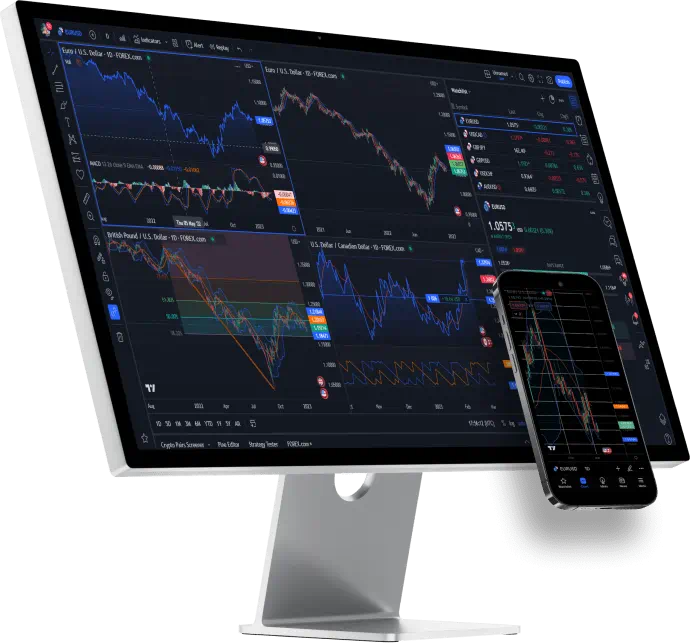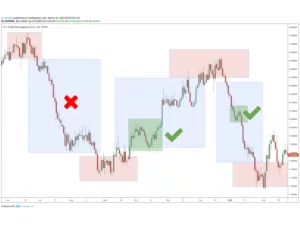Forex trading offers big opportunities, but without proper risk control, new traders can lose money quickly. Managing risk means protecting your capital while learning how to trade smartly. The goal is not to win every trade but to stay in the market long enough to grow gradually and gain experience.
Beginners should always limit how much they risk on each trade, use stop-loss orders, and never trade emotionally. If you have ₹50,000, you should not risk more than ₹1,000–₹1,500 per trade. This keeps your account safe during losses. Forex trading success depends more on discipline and money management than on guessing the market direction.
Understanding Risk in Forex Trading
Risk is an unavoidable part of forex trading, and understanding how to manage it separates professionals from beginners. Every time you enter a trade, you face the possibility of losing money — but with proper planning, those losses can be controlled. Successful traders don’t try to avoid risk; instead, they focus on keeping it at acceptable levels while aiming for consistent growth. Recognizing what causes losses and how to minimize them is the foundation of a sustainable trading career.

What Is Trading Risk
Trading risk refers to the possibility of losing money due to unpredictable price movements, news events, or poor decisions. The forex market operates 24 hours a day, which means prices can change rapidly due to global economic or political events. Every trader faces risk, but learning how to measure, limit, and control it makes the difference between long-term success and failure. A good trader always knows how much they could lose before opening a position.
- High leverage – Amplifies both profits and losses, often leading to margin calls.
- Overtrading – Opening too many trades increases exposure and stress.
- Lack of stop-loss orders – Leads to uncontrolled losses if the market moves suddenly.
- Emotional trading decisions – Acting out of fear or greed results in poor timing and mistakes.
Recognizing these risk factors helps traders build discipline and avoid preventable losses. Managing them effectively ensures you trade with logic, not emotion.
Importance of Risk Management
Risk management is the backbone of professional forex trading. It’s not about avoiding losses completely but about keeping them small enough to survive and recover. Even a highly skilled trader can lose money without proper risk control. Managing risk means using a structured approach to decide how much to invest, where to set stop-loss levels, and when to exit a trade.
Good risk control protects your capital and gives you time to develop experience. Without it, even profitable strategies will fail during periods of volatility. Risk management ensures consistency and keeps traders from making emotional decisions after losses. A single mistake can destroy weeks of effort if no limits are in place. With proper planning, you can survive bad trades and continue improving your results.
Traders who manage risk effectively stay in the market longer, giving themselves more opportunities to learn and grow. The goal is not to win every trade but to protect capital and recover from losses gradually. Maintaining a risk-to-reward ratio of at least 1:2 ensures that one winning trade can cover multiple small losses. Over time, disciplined risk control builds confidence and leads to steady account growth.
Setting Stop-Loss and Take-Profit Levels
Stop-loss and take-profit orders are essential tools for managing risk automatically. They help traders control losses and lock in profits without constantly watching the charts. Setting these levels correctly ensures that emotions don’t interfere with decision-making.
A stop-loss automatically closes a trade when the market reaches a specific price, preventing larger losses. It’s one of the simplest yet most effective tools in trading. Always place a stop-loss as soon as you enter a trade to avoid unpredictable losses during sharp market moves. Traders should base stop-loss placement on technical factors like recent highs, lows, or key support and resistance levels.
For instance, if you buy EUR/USD at 1.0800, a reasonable stop-loss could be at 1.0780 — limiting your loss to 20 pips. Setting a take-profit at 1.0840 creates a 1:2 risk-to-reward ratio, meaning your potential gain is twice your possible loss. This ratio helps maintain profitability even if only half of your trades succeed. Over time, consistent use of stop-loss and take-profit levels allows traders to stay disciplined and protect their capital from large drawdowns.
Determining Position Size
Position sizing is one of the most important parts of risk management. It determines how much of your capital is allocated to each trade and ensures that no single loss can severely impact your account. Many beginners ignore this step and end up risking too much without realizing it. Calculating position size correctly helps maintain consistent risk across all trades and protects the balance from sudden market swings.
Position Size Formula
To calculate the ideal position size, use the simple formula:
Position Size = (Account Size × Risk %) ÷ Stop-Loss Distance
This formula helps traders maintain control over their exposure and keep their losses within acceptable limits. Always calculate position size before entering any trade — never guess.
Simple Example
Suppose you have ₹50,000 in your account and you decide to risk 2% per trade, which equals ₹1,000. If your stop-loss is 50 pips away, you can trade 0.2 lots safely without exceeding your risk limit. This approach keeps losses manageable while allowing consistent participation in the market. Using fixed risk percentages like 1–2% per trade ensures long-term account stability even during losing streaks.
Managing Leverage Effectively
Leverage can be a useful tool when used correctly, but it’s also one of the fastest ways to lose money when mismanaged. It allows traders to control large positions with smaller deposits, but every pip move affects your balance more strongly. Learning to manage leverage wisely ensures that you stay in the market longer without unnecessary risk.
Leverage lets traders control positions larger than their capital allows. For instance, with 1:100 leverage, you can open a ₹1,00,000 trade with just ₹1,000 in margin. While this magnifies profits, it also multiplies losses. One bad move in a highly leveraged position can quickly wipe out your trading account.
Safe Leverage Levels
Beginners should use leverage below 1:50 to limit losses during volatile conditions. Professional traders often stay within 1:10–1:30, especially when trading during high-impact events. Using very high leverage, like 1:200 or 1:500, increases the risk of margin calls and total account wipeouts. Always test different leverage levels on demo accounts to understand how they affect your positions before using them in live trading.
Avoiding Emotional Trading
Emotions are one of the biggest enemies of consistent trading. Even a perfect strategy can fail when decisions are driven by fear or greed. Understanding how emotions affect your choices helps prevent impulsive trades and protects your account from unnecessary losses.
Emotional Traps
- Revenge trading after a loss – Trying to recover quickly usually leads to bigger losses.
- Overconfidence after profit – Success can cause traders to take larger risks than normal.
- Fear of missing out (FOMO) – Entering trades late just to catch movement often ends in loss.
Create a detailed trading plan before entering the market and follow it no matter what happens. Set clear entry, stop-loss, and take-profit levels in advance. If emotions start to rise, step away from the screen until you can think clearly again. Use smaller positions when confidence is low. Over time, consistent discipline helps eliminate emotional trading completely.
Using a Trading Journal
A trading journal is a powerful tool for improving performance. It helps traders analyze what works, what doesn’t, and how to adjust their strategies for better results. Keeping detailed notes of every trade helps identify recurring mistakes and strengthens decision-making over time.
Without records, it’s hard to measure progress or understand why certain trades succeed or fail. A trading journal provides objective insight into your habits and helps refine both technical and psychological aspects of trading.
- Trade setup and reason for entry
- Entry and exit price
- Profit or loss amount
- Market conditions (trend, volatility, news impact)
- Notes on emotions or mistakes during the trade
Review your journal weekly or monthly to find patterns in both profitable and losing trades. This reflection process builds consistency and helps transform knowledge into measurable improvement.
Diversifying Trades and Avoiding Overexposure
Diversification reduces risk by spreading exposure across different markets or instruments. It ensures that a loss in one trade doesn’t heavily impact the overall portfolio. In forex, overexposure often happens when traders open multiple trades on pairs that move in the same direction.
Avoid trading too many positions that are correlated — meaning they move similarly due to shared base or quote currencies. Concentrating all trades on one type of pair can double your losses if the market turns against that currency.
If you already have open trades on EUR/USD and GBP/USD, remember that both often move together because of the U.S. dollar’s influence. Opening multiple trades on these pairs increases your total risk rather than diversifying it. To manage exposure, choose pairs with different base currencies or hedge with smaller lot sizes. Proper diversification helps balance your portfolio, reduces emotional pressure, and protects capital during volatile sessions.
Following a Trading Plan
A structured trading plan is essential for long-term consistency and control in forex trading. It serves as a personal roadmap that defines how you will enter, manage, and exit trades under different market conditions. Without a plan, traders often make emotional or impulsive decisions that lead to unnecessary losses. A well-prepared plan keeps you disciplined, focused, and aware of your financial limits. It also helps track progress and refine your approach over time, turning trading into a professional process rather than a guessing game.
A trading plan gives you a clear sense of direction and eliminates confusion during live market situations. It defines your risk tolerance, target goals, and trading style, making it easier to stay consistent even during volatile periods. By following a predefined structure, you avoid emotional reactions to sudden price swings and focus on strategy-based decisions. Traders who stick to their plans are more likely to grow steadily and avoid burnout.
What to Include
Every trading plan should have clear, measurable components that guide daily decisions.
- Risk per trade – Limit exposure to 1–2% of total capital per position.
- Preferred pairs and timeframes – Focus on specific currency pairs and chart intervals for clarity.
- Entry and exit rules – Define exact conditions for opening and closing trades.
- Review schedule – Evaluate performance weekly or monthly to refine your approach.
A good plan grows with experience. Review it regularly to add improvements based on your trading data and evolving market understanding.
Learning from Losses
Losses are part of every trader’s journey and should be treated as valuable learning opportunities. Instead of reacting with frustration, study each loss to understand the cause. This habit builds resilience, improves discipline, and turns mistakes into experience that sharpens future performance.
How to Handle Losing Trades
Every trader experiences losses, no matter their skill level. The key is to handle them calmly and logically. Review the setup — was the entry too early, was stop-loss too tight, or was the trade taken during high volatility? Avoid revenge trading and accept that not every strategy works in all conditions. Recording your thought process during losing trades helps prevent repeating the same mistakes.
Growth Through Review
Consistently reviewing losing trades is one of the most effective ways to grow. Identify common errors such as poor timing, wrong lot size, or ignoring trend direction. Over time, this analysis helps refine your system and strengthen decision-making. Traders who study their losses often find that their accuracy improves naturally because they learn to avoid previous pitfalls. Treat every loss as part of the training that leads to long-term profitability.
Practical Daily Risk Management Routine
Developing a daily routine helps maintain focus and control throughout trading hours. A simple checklist ensures you stay prepared for all scenarios and protect your capital against unnecessary exposure. Following a structured schedule builds good habits and reduces emotional trading decisions.
- Check major economic news such as central bank updates, inflation data, or employment reports.
- Review open positions and current market sentiment before placing new trades.
- Adjust stop-loss and take-profit levels if market volatility has changed overnight.
- Avoid trading during high-risk news releases like interest rate announcements or GDP data.
Starting your trading day with preparation keeps you aware of possible risks and prevents unexpected shocks. It also gives you a clear picture of which currency pairs are most active and worth trading.
Evening Review
At the end of the trading day, take time to record your results and evaluate your overall performance. Note each trade’s entry and exit point, profit or loss, and the reason behind taking the trade. Summarize total daily gains or losses, review charts, and analyze market behavior for patterns. Over time, this habit builds a personal trading record that highlights strengths and weaknesses. By maintaining consistency in daily review, traders can improve accuracy, control emotions, and stay aligned with their long-term goals.



